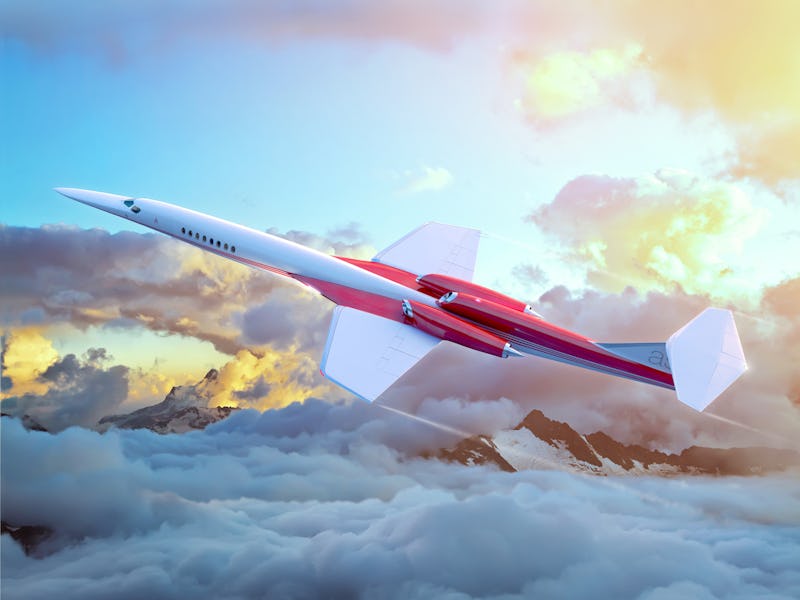What's Next for 'Son of Concorde' Supersonic Jet
The makers of this supersonic jet are planning on it not repeating the mistakes of its predecessor.

A dozen years after the famed (or infamous) Concorde jet was retired as a loud, economic failure, the Aerion Corporation says it’s designed a supersonic jet that will be nearly as fast as the original — and have power requirements low enough to operate in the black.
The planned AS2 jet will fly as many as 12 passengers (or conversely: yup, only 12) between London and New York in as little as three hours by 2023. (That’s slower than the record time of 2 hours, 52 minutes, 59 seconds, as set by the original Concorde.)
While Aerion executives keep searching for a U.S. manufacturing site, designers at the Reno, Nevada-based company finalized preliminary designs for a carbon-fiber wing, landing gear, and fuel system for the plane that will be capable of accelerating to Mach 1.5 (speed depends on altitude but around 1,150 mph) over oceans. Normal jets average a speed of 480 miles per hour.
Aerion says the A2 will be able to "operate overland and overwater with greater efficiency than the Concorde."
According to a statement on engineering sent to Inverse, Aerion’s engineers will save fuel by mastering a “supersonic natural laminar flow over the AS2’s wings” that, mixed with the airframe design, will reduce friction drag by roughly 20 percent when compared to a conventional wing design.
While the Concorde — known for its ear-rattling supersonic booms— could not operate under 2015’s noise and emissions regulations, the AS2’s drag reduction will reduce power requirements and fuel consumption.
The AS 2 "Son of Concorde" cockpit
“The economics of a business jet are fundamentally different than those of an airliner,” says a rep for Aerion. “Business aviation users place a high value on their time and will pay for the time-saving benefits of a business jet, and, of course, a supersonic jet offers the greatest time savings. Aerion estimates a market over 20 years for 600 AS2 jets, more than enough to avoid the financial problems of the Concorde program.”
The A2's drag reduction will reduce power requirements and fuel consumption allowing for a longer range.
Because the AS2’s design should let it fly just below the speed of sound with more efficiency than the Concorde, it can establish routes all over the world.
The company, backed by Texas-based billionaire Robert Bass — will have all major components supplied by Airbus, which will complete the final assembly.
Besides just being financially draining, the Concorde was dealing with the wake of the nightmarish 2000 crash of Air France Flight 4590 that left 113 dead. Considering the long, slow resources hog it had been on all involved, the tragedy was more than enough to finally ground the dream of a supersonic jet that could shoot passengers across the hemispheres in less time than most people have between clocking in for work and taking their lunch break.
That the original Concorde was allowed to fly for so long in spite of its failure to make money speaks to just how infatuated people were with the fantasy. If Aerion can capture the public’s imagination while out-engineering its predecessor, there’s no reason it can’t outdo the Concorde’s three decades-plus run.
AS 2 in an artist's rendering above Dubai